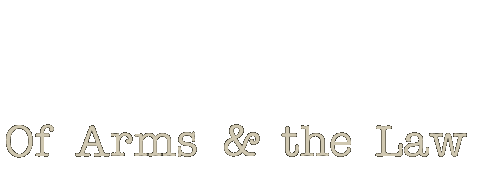« Is any Supreme Court nomination invalid? | Main | Knife control in Scotland »
Judge Roberts and the Commerce Clause
While the Supreme Court nominee has never said anything regarding the Second Amendment, there seems to be some hope that he views the Congressional power over interstate commerce as less than unlimited. In he dissented from a denial of rehearing en banc, arguing that there was a Commerce Clause problem with applying the Endangered Species Act to forbid a "taking" of an endangered toad within a State. (It was an "incidental take," where a developer wanted to build on a parcel and the indirect effect of that might be death of some of the toads).
(Roberts also shows a bit of wit, referring to "regulating the taking of a hapless toad that, for reasons of its own, lives its entire life in California")
ROBERTS, Circuit Judge, dissenting from denial of rehearing en banc:
The panel's opinion in effect asks whether the challenged regulation substantially affects interstate commerce, rather than whether the activity being regulated does so. Thus, the panel sustains the application of the Act in this case because Rancho Viejo's commercial development constitutes interstate commerce and the regulation impinges on that development, not because the incidental taking of arroyo toads can be said to be interstate commerce. See Rancho Viejo, LLC v. Norton, 323 F.3d 1062, 1071-73.
Such an approach seems inconsistent with the Supreme Court's holdings in United States v. Lopez, 514 U.S. 549 (1995) and United States v. Morrison, 529 U.S. 598 (2000). The Court in those cases upheld facial Commerce Clause challenges to legislation prohibiting the possession of firearms in school zones and violence against women. Given United States v. Salerno, 481 U.S. 739 (1987), such a facial challenge can succeed only if there are no circumstances in which the Act at issue can be applied without violating the Commerce Clause. Under the panel's approach in this case, however, if the defendant in Lopez possessed the firearm because he was part of an interstate ring and had brought it to the school to sell it, or the defendant in Morrison assaulted his victims to promote interstate extortion, then clearly the challenged regulations in those cases would have substantially affected interstate commerce, and the facial Commerce Clause challenges would have failed.
That is precisely what the Fifth Circuit concluded recently in rejecting the approach the panel took in this case. See GDF Realty Inv., Ltd. v. Norton, 326 F.3d 622, 634-35 (5th Cir. 2003). As the Fifth Circuit explained, "looking primarily beyond the regulated activity ... would `effectually obliterate' the limiting purpose of the Commerce Clause," and, under such an approach, "the facial challenges in Lopez and Morrison would have failed." Id.
The panel's approach in this case leads to the result that regulating the taking of a hapless toad that, for reasons of its own, lives its entire life in California constitutes regulating "Commerce ... among the several States." U.S. CONST. art. I, § 8, cl. 3. To be fair, the panel faithfully applied National Association of Home Builders v. Babbitt, 130 F.3d 1041 (D.C. Cir. 1997). En banc review is appropriate because the approach of the panel in this case and NAHB now conflicts with the opinion of a sister circuit - a fact confirmed by that circuit's quotation from the NAHB dissent. See GDF Realty, 326 F.3d at 636 (quoting NAHB, 130 F.3d at 1067 (Sentelle, J., dissenting)). Such review would also afford the opportunity to consider alternative grounds for sustaining application of the Act that may be more consistent with Supreme Court precedent. See Rancho Viejo, LLC v. Norton, 323 F.3d at 1067-68 n.2.

I would very much like the nominee to answer the question -- what does the second amendment mean. He can then skip the rest of the questions, I will decide based on that answer.